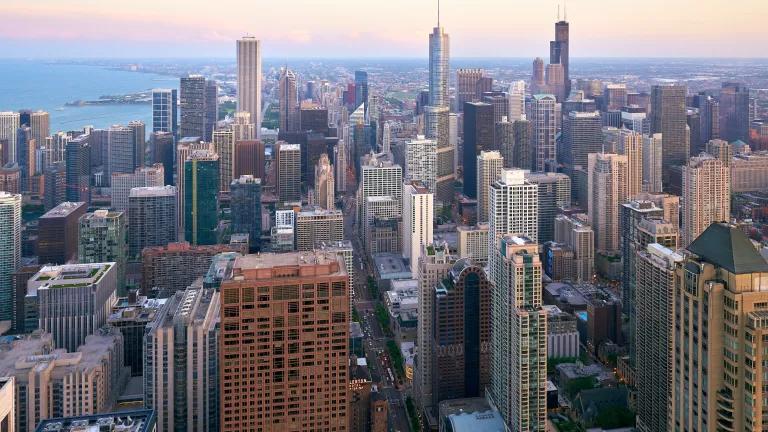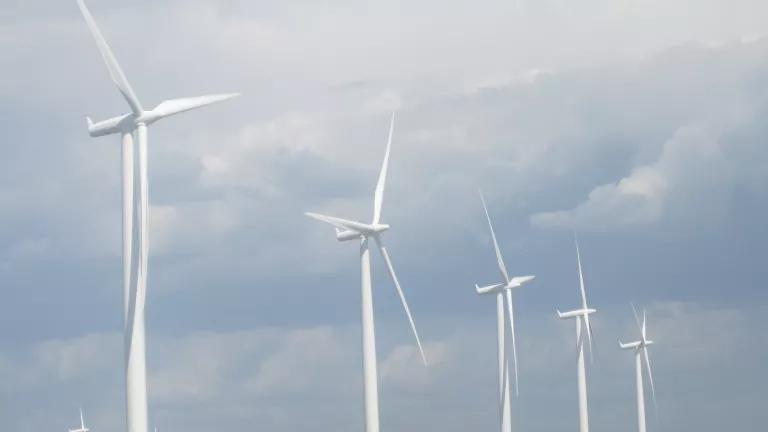The Story Behind Today’s Diablo Canyon Announcement

NRDC helped create the foundation for today’s announcement that Pacific Gas & Electric Company plans to withdraw its application for a 20-year license extension for its giant Diablo Canyon nuclear plant, and seek permission to replace the California plant’s two generating units with a portfolio of lower-cost, zero-carbon resources led by energy efficiency and renewable energy. The discussions included senior staff from the utility, NRDC, and our fellow environmental group Friends of the Earth.
Under the Joint Proposal we announced today with PG&E – one of the nation’s largest combination natural gas and electric utilities serving 16 million people in northern and central California – the state’s last remaining nuclear plant would be retired no later than August 2025. Extensive efforts will be made to ensure fair treatment for the plant’s workers and the rural community in which it was sited more than three decades ago near San Luis Obispo, about 250 miles south of San Francisco, and the proposal has strong labor support, including the principal union for the plant’s workers.
NRDC, which will support the Joint Proposal before state and federal regulators, estimates that PG&E customers will save at least $1 billion from its implementation.
Historic for many reasons
An orderly phase-out of Diablo Canyon will be historic in important ways. It will be the first nuclear power plant retirement to be conditioned on full replacement with lower cost zero-carbon resources. It reflects specific findings by the plant owner that giant “baseload” power plants no longer fit the needs of modern power grids, which require greater flexibility and resilience. For example, California at times throws away solar energy at midday because it exceeds customers’ electricity needs and storage capacity is insufficient. Under these circumstances, a baseload nuclear plant that is designed to operate around-the-clock becomes a roadblock to replacing polluting power plants with emissions-free renewable energy.
The Joint Proposal, and recovery of associated costs, is supported by PG&E, Friends of the Earth, and NRDC. Environment California and the Alliance for Nuclear Responsibility have signed on as well, as have the International Brotherhood of Electrical Workers Local 1245 and the Coalition of California Utility Employees (both acting on behalf of workers at the plant). Environment America, the Environmental Defense Fund and the Union of Concerned Scientists are releasing supportive statements. The parties involved have worked hard to cover all contingencies and possible complications.
Why is NRDC involved?
Our old friend Dave Freeman, an iconic figure in the sustainable energy movement and advisor to Friends of the Earth, initially invited our participation, as did PG&E’s leadership, based on NRDC’s decades of engagement in California electricity proceedings and our expertise on energy efficiency, renewable energy resources, and the safe decommissioning of nuclear plants. NRDC’s Oceans Program also has a longstanding interest in ways to minimize and eliminate environmental damage from the plant’s cooling system. And NRDC believes that it’s essential that the world’s electricity systems transition rapidly to energy efficiency and renewable energy in order to ward off the worst effects of climate change. While nuclear plants are low-carbon facilities, they also are relatively costly, have other environmental impacts, and reduce the flexibility of electricity systems.
At the same time, shutting down a plant precipitously, as occurred for southern California’s San Onofre Nuclear Generating Station in 2013 after an equipment failure, leaves utilities scrambling to find other options for providing service to their customers. Unfortunately, this can mean turning to existing plants that run on natural gas and emit carbon pollution, as it takes more time and planning to get cleaner new resources into the system. The Joint Proposal would ensure a transition that avoids any such environmental penalty.
If all goes as planned, Diablo Canyon will retire at the end of its current operating license, in no more than nine years, while PG&E ramps up additional energy efficiency, renewable energy resources, energy storage, and demand response (compensating customers to alter their energy use when the grid is under stress). The United States has more than 90 other aging nuclear reactors. For the utility owners and customers of those plants, the replacement of Diablo Canyon with clean resources will be showing the way to a more reliable, lower-cost power system. NRDC stands ready to help.
The Joint Proposal on the future of Diablo Canyon is only a proposal now. Years of effort will be needed to realize its promise and many other parties will be involved. NRDC will be there throughout, as part of our campaign in California and beyond to power a healthy economy without carbon pollution.



